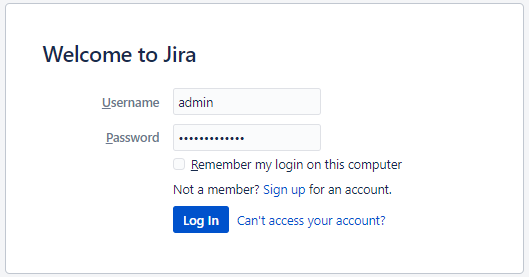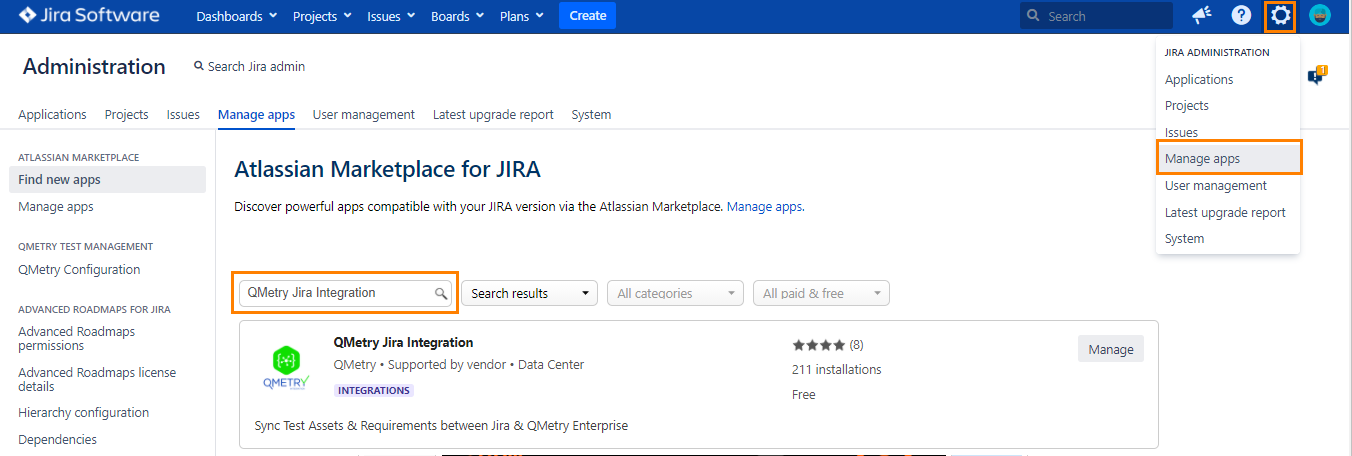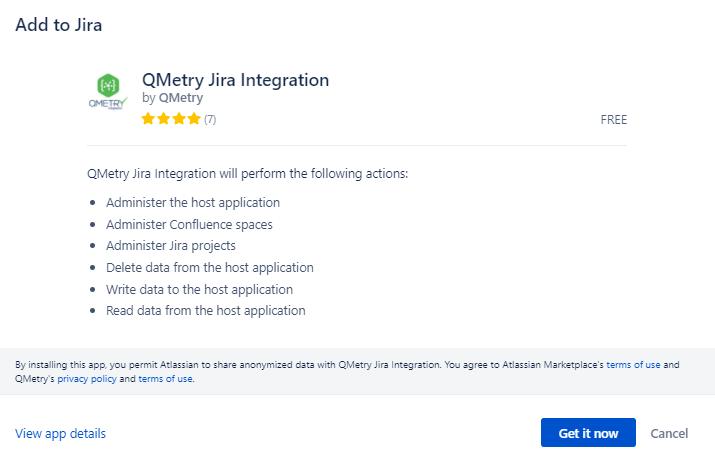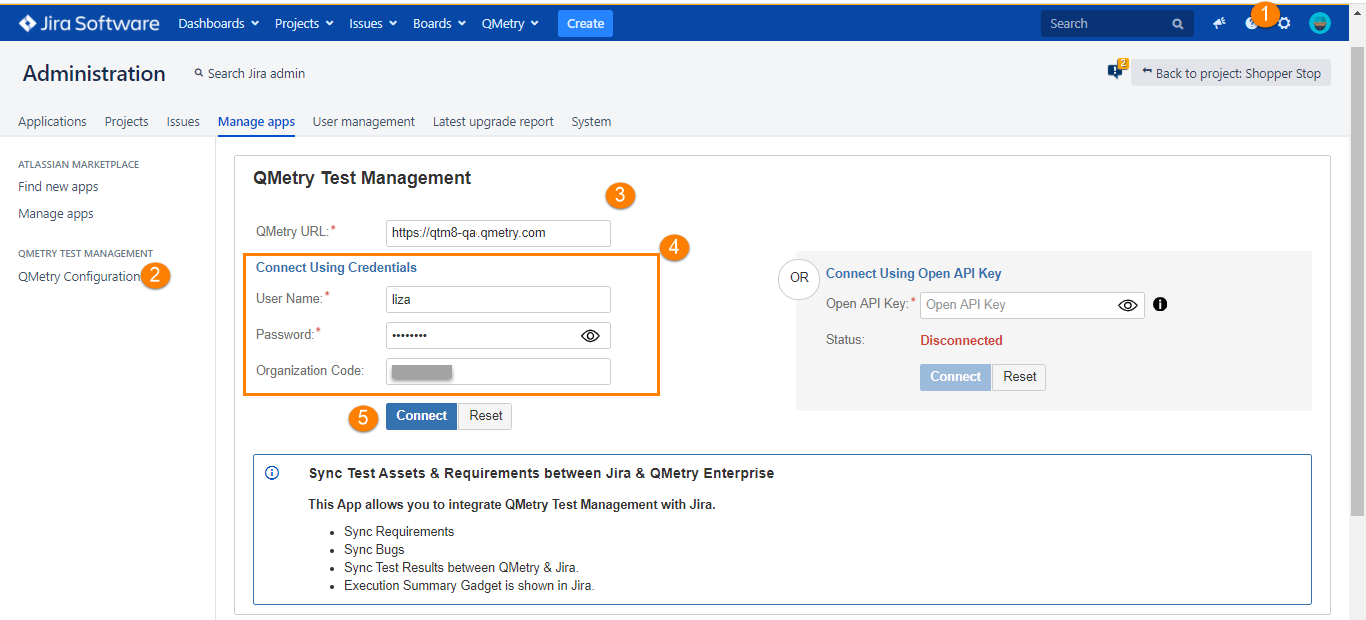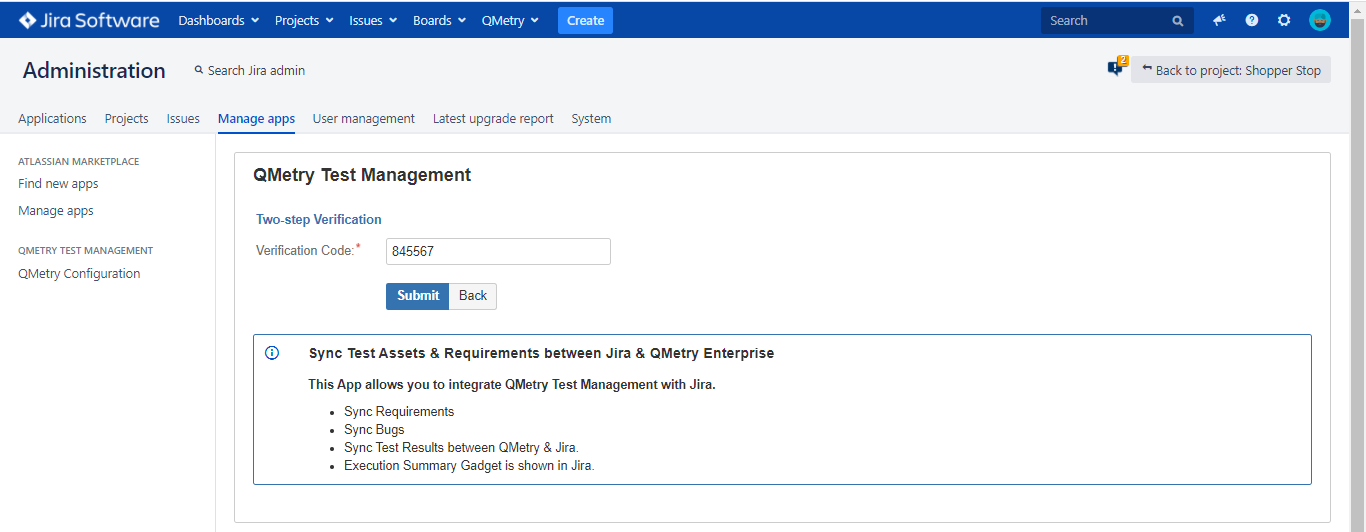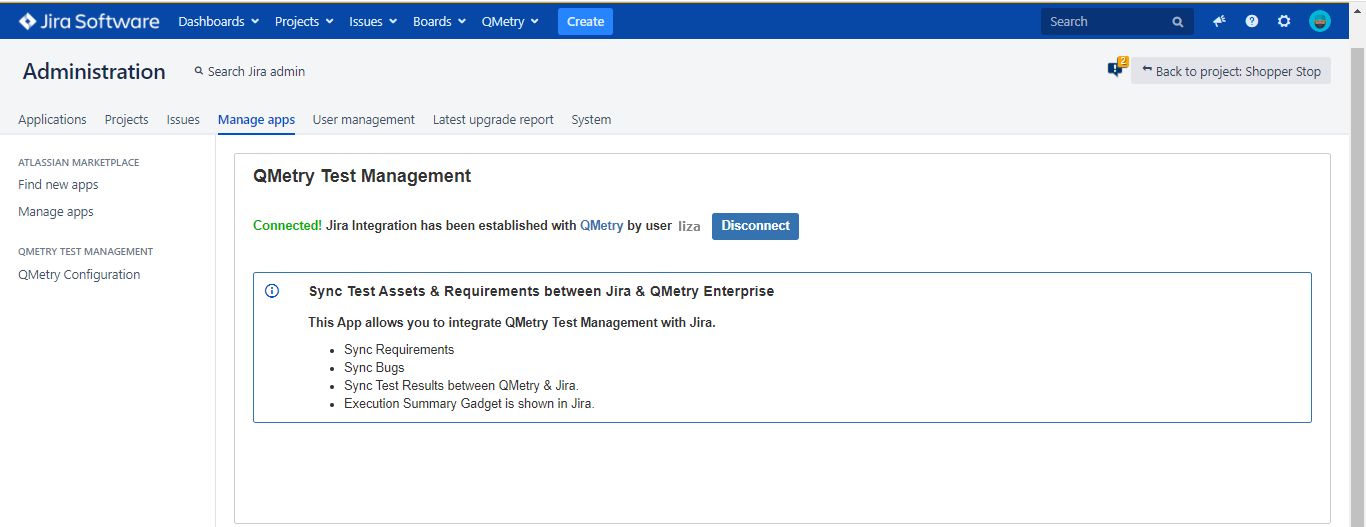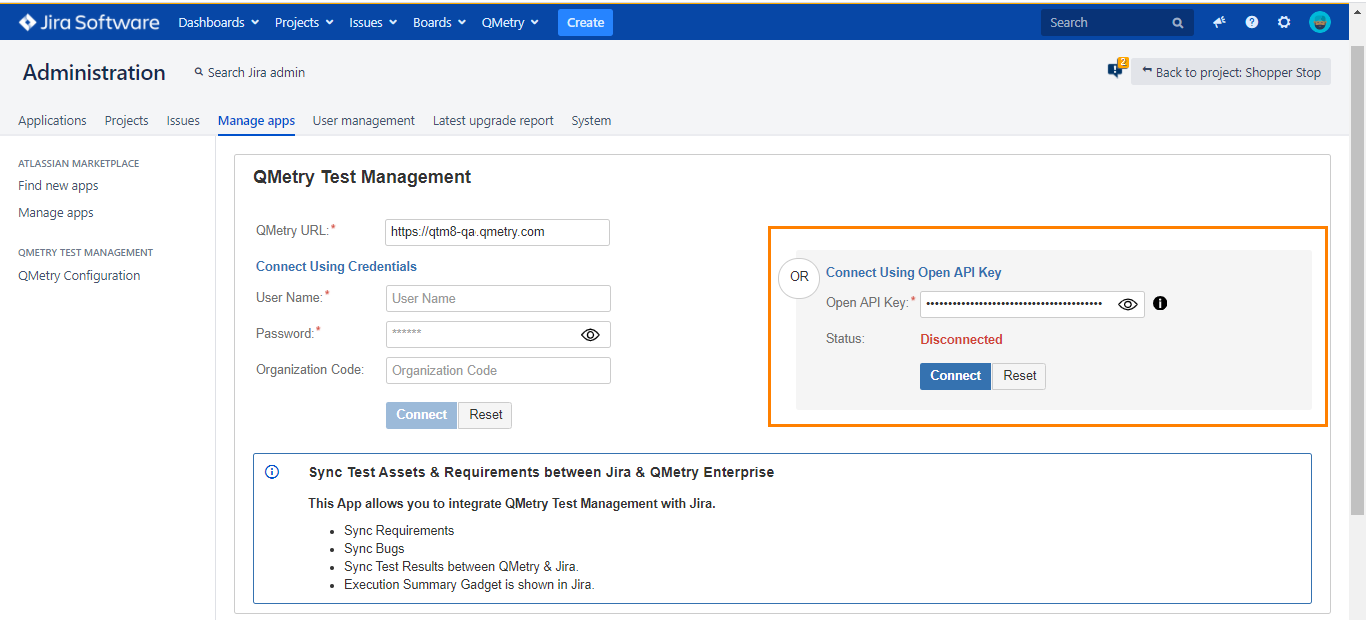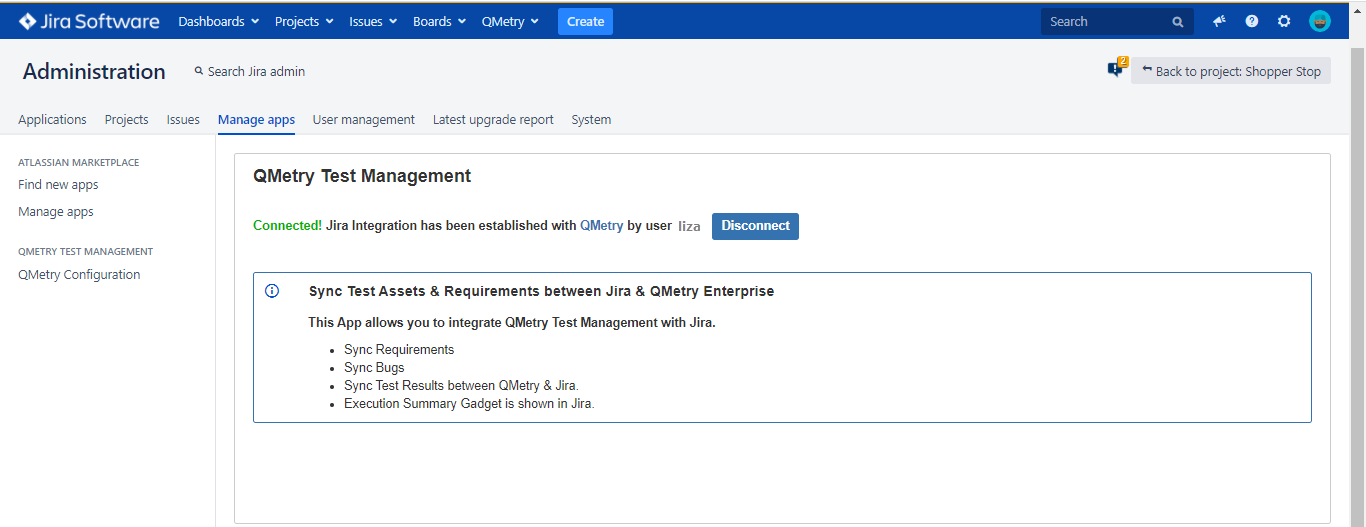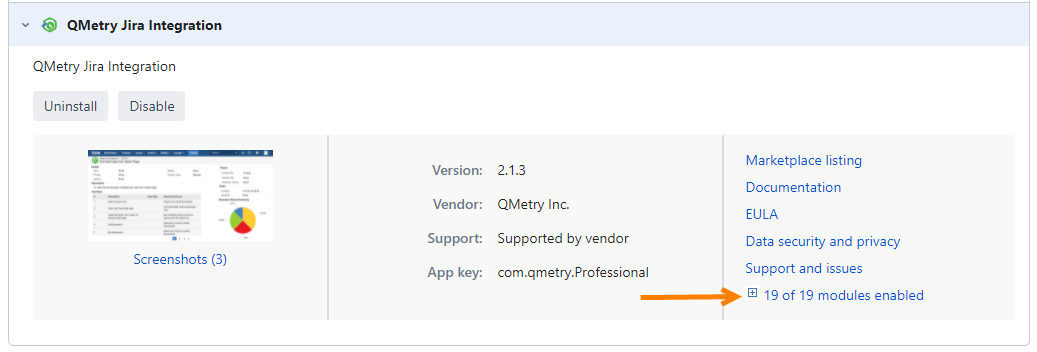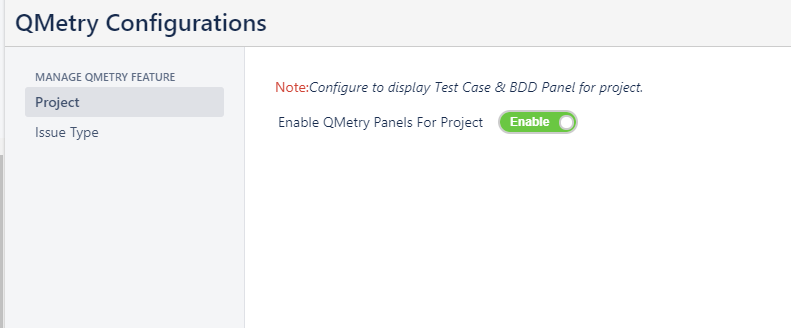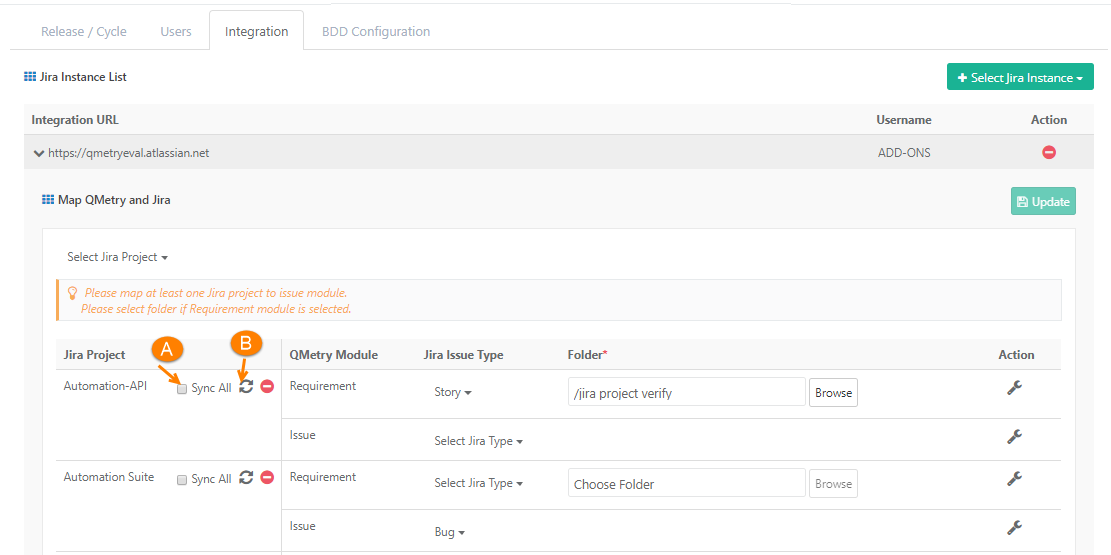Back to QMetry All Products Help Page
Install & Configure QMetry's Jira Integration App
Pre-requisites: Supported QMetry Jira Integration
Below is the support matrix for the QMetry Jira Integration app.
| QMetry | Jira | Supported? |
|---|---|---|
| Cloud | Cloud | Yes |
| Server | Server | Yes |
| Cloud | Server | Yes |
| Server | Cloud | No |
Step 1 : Install App: "QMetry Jira Integration"
Install "QMetry Jira Integration" app in your Jira Instance. It is free to download.
| Jira Edition | Jira App Availability | Upgrading Jira App |
|---|---|---|
Cloud | Already Installed | Automatic Upgrade. Configuration Required |
| Not Installed | Installation and Configuration Required | |
Server | Already Installed | Upgrade and Configuration Required |
| Not installed | Installation and Configuration Required |
1. Login in Jira with Admin Credentials. Administrator login is required to be able to install the App from Atlassian Marketplace.
2. After login into the Jira, go to the Jira settings option and click on Manage apps.
In the Manage apps section, there is an option "Find new apps" to find & Install the app from Market place. Search for the "QMetry Jira Integration" app.
3. Select the app and click on the Get app button to install it.
4. Click on the Get it now button.
Step 2 : Configuring JIRA app with QMetry Admin
1. After installing the "QMetry Jira Integration" app follow below steps to configure Jira with QMetry. The integration requires QMetry admin credentials.
There are two options available to configure Jira with QMetry:
A. Connect using Credentials: The integration should be done with QMetry admin credentials.
B. Connect using Open API Key: If you have an integration package enabled then only you will get the Open API key. You can use the Open API key for any user to connect QMetry with Jira.
A. Connect Using Credentials
Note:
- Integrate with QMetry users using QMetry authentication. A QMetry user authenticated with SSO login can not be used for Integration. Recommended - Use the system admin (for cloud instances - the user who has registered for the QMetry instance) or administrator (for server customer - user "Admin" is the administrator) user for authentication.
- If the user has Two-step Verification enabled in QMetry, then they need to provide the Two-step Verification code to connect using this method. Users with Two-step Verification disabled can connect directly by providing credentials and Organization Code.
(1) Go to Jira settings >> (2) QMetry Configuration >> (3) Enter QMetry URL (4) Enter QMetry Admin Credentials and Organization Code >> (5) Connect the configuration.
2. If Two-step Verification is enabled for the user, also provide the Two-step Verification code after clicking on the Connect button.
3. Enter the Two-step Verification code and click Submit to save the details.
4. On submitting the valid Two-step Verification code, the Jira integration is established with QMetry.
B. Connect Using Open API Key
Users can also integrate Jira with QMetry by using the Open API Key of QMetry (Integration > Open API).
Note: Open API Key is only available for users who have opted for the Integration app.
After entering the valid Open API Key and clicking Connect, the Jira integration is established with QMetry.
If you are using Cloud version of Jira, the integration app "QMetry Jira Integration" will be displayed as follows in Jira under the Apps > Manage apps section.
If you are on Server or Data Center version of Jira, the integration app "QMetry Jira Integration" will be displayed as follows in Jira, under the Apps > Manage apps section.
Step 3: Verify All Modules are Enabled (only for server or data center Jira editions).
Note: Skip this step if you're using Cloud Jira.
If you are on Server or Data Center version of Jira, then verify that all the modules are enabled on the Manage app screen.
- In Jira, go to Apps > Manage apps section.
- Expand the modules section and make sure that all the modules are enabled.
After the successful configuration with the above steps, QMetry "Integration" section will start showing "JIRA" configured as below.
Login to QMetry >> Integration >> Integrations >> Verify Integration URL and Status as "Active"
The Associated QMetry Projects column will show QMetry projects configured with this integration.
Step 5: Integrate Jira Project with A QMetry Project
Refer to Map Jira projects, Issue type and Fields with QMetry Project
Step 6: Enable QMetry Test case and BDD panels for Jira Projects
Configuration to enable QMetry Test case and BDD panels for Jira Projects. This change is required for all Jira projects that are to be integrated with QMetry.
1. Log into Jira and open your Project. Click on Project Settings on the sidebar.
BDD and Test Case panels are enabled only for the current project (and not all other projects having the same project type).
A similar configuration has to be done for all projects which are integrated with QMetry.
4. To sync the data of already linked Jira project, go to Projects > Project / Release / Cycle from QMetry. Open the Project > Integration tab. Click the Sync button against your Jira Project to sync the requirements and issues from Jira.
A. Sync All : Enabling this check-box and clicking the sync will sync complete data between QMetry and Jira (syncing all the Jira assets to QMetry).
B. Sync : Clicking on the sync button without enabling the Sync All check-box would just sync the updated assets from Jira. "Sync" option should be used when there are structural changes made in Jira like adding new fields, updating of the existing fields in Jira layouts, or when the QMetry-Jira integration was stuck or broken due to some reason.
Back to QMetry All Products Help Page
